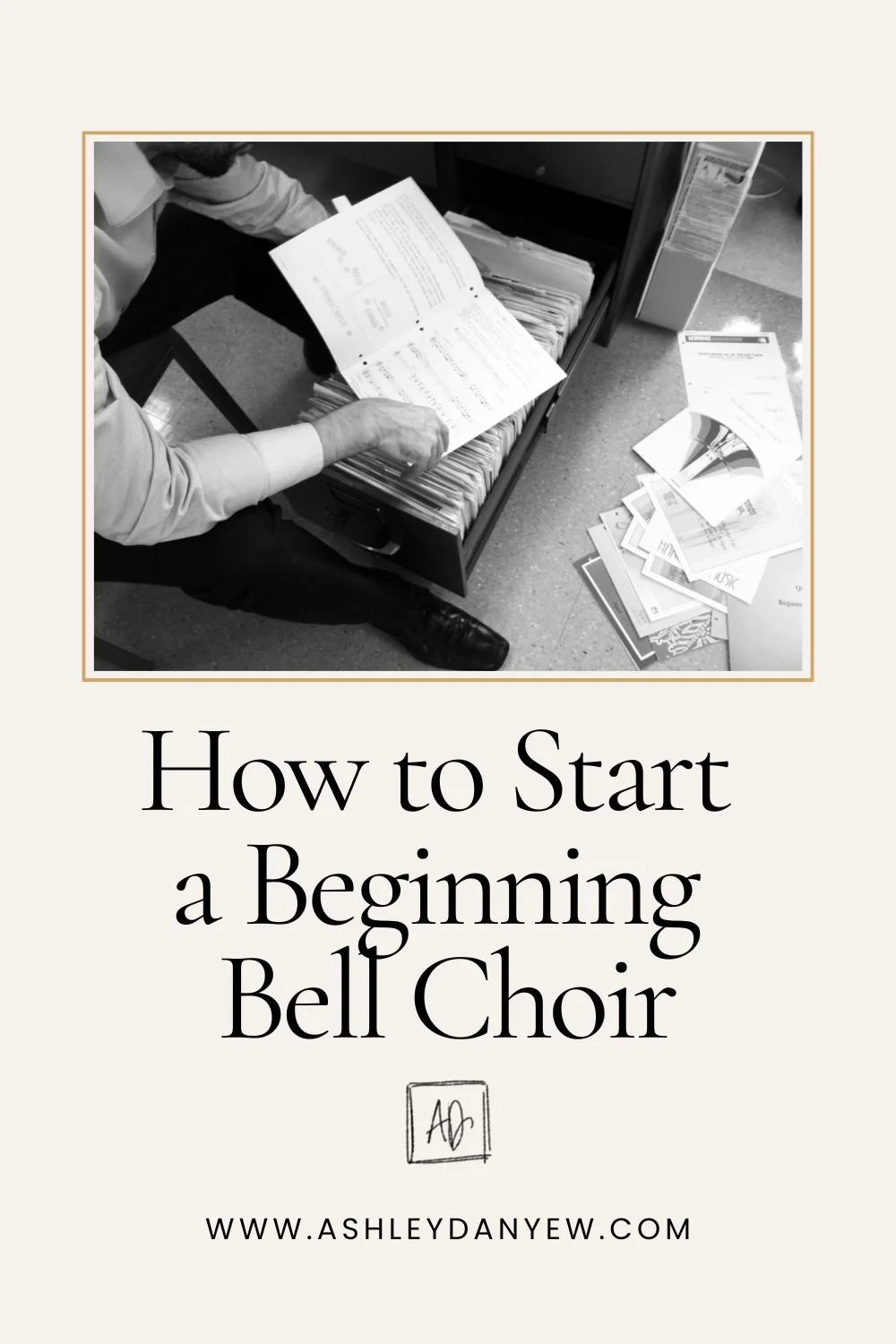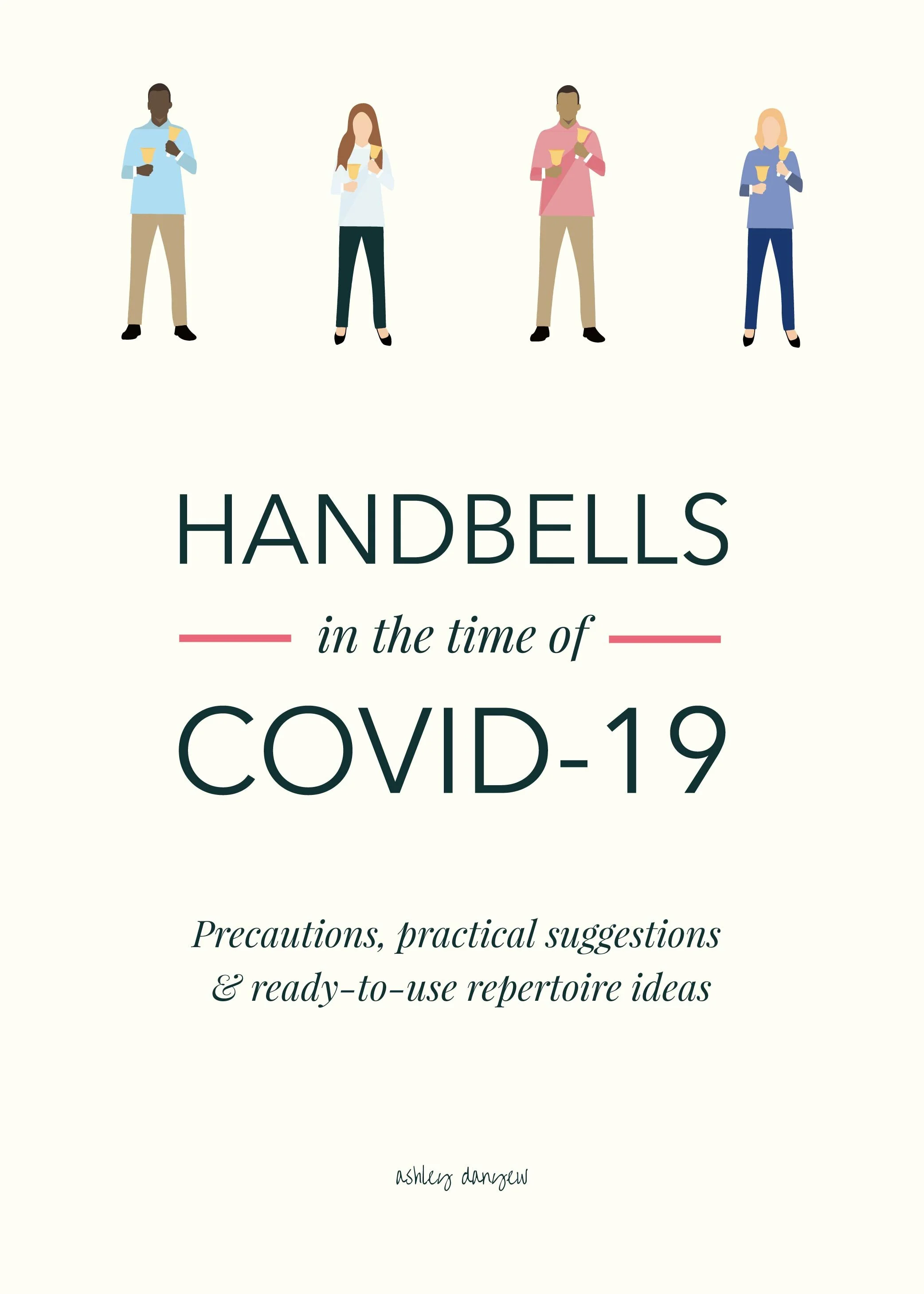A musical underscore is played underneath dialogue or action of some kind to help set the scene or create a mood. (source)
Musical underscoring in worship (traditional and contemporary) is a creative way to elevate spoken texts, connect musical elements that may be separated by reading or prayer, or highlight a drama or moment of prayer in the service.
Musical underscores can be used with:
Scripture readings (I’ve done this on Christmas Eve for the Luke 2 reading and on Easter morning with the "Reading from the Tomb" and it was very effective!)
Creeds and affirmations
Responsive readings and litanies
Pastoral prayers or Prayers of the People
Depending on the context, you might also consider adding soft, sustained piano chords, as well.
Related post: Creating Unique Musical Underscores for Worship
To create a musical underscore with handbells, I recommend using the singing bell technique. This is a perfect way to add a subtle yet meaningful moment to your worship service.
Similar to the "singing" effect you can create with a water glass or wine glass, the singing bell effect is created by rubbing a wooden dowel around the outside edge of the bell, causing it to vibrate.
Here are two quick video tutorials on how to do the singing bell technique: 1) Singing bell using a plain dowel and 2) Singing bell using a DIY dipped dowel.
A note on singing bell dowels:
You can purchase singing bell dowels from a handbell retailer or make your own. Look for hardwood such as birch, walnut, oak, or ash. Some leave the dowels plain, without any kind of seal or coating; others make dipped dowels, meaning one end is dipped in rubber. You can hold this end for extra grip or use it for the singing bell, which some people prefer.
Here are a few resources for you:
Birch or walnut singing bell dowels from Third Bell on the Right
From the creator: "Walnut works on most bells. It will work consistently on the higher bells (C5 and up) and lower bells (G4 and below—including all 3’s except for Schulmerich bells). Birch dowels work great on G4 and up. They are a great alternative to walnut and will work consistently for your ringers but will take some patience."
DIY singing bell dowels + advice from Handbell World
Dipped singing bell dowels from Bells of the Lakes
How to Use the Singing Bell Technique
There are many ways to incorporate this unique handbell technique into your worship services. Some solo pieces (like this arrangement of "Still, Still, Still") call for this technique to create a pedal-point accompaniment for a melody. You can also use the singing bell technique by itself to create a musical underscore.
Today, I'm sharing a step-by-step guide to creating your own musical underscores for worship using handbells.
How to Create Your Own Musical Underscore with Handbells
What you'll need:
A set of handbells (1-octave minimum)
Gloves
Singing bell dowels (3-4, one for each ringer)
A copy of the reading you're underscoring
Pencil
Step 1
Choose 3-4 bells (e.g. A3, G4, C5, D5) at a minimum.
Think of this like a chord on the piano. I find that bells in the middle register tend to sing the best (vs. high bells), but experiment and see what sound you like.
When using the singing bell technique, each person can do only one bell at a time. I recommend having at least two people if not three when underscoring a reading. That way, you can overlap the bells, so as one person is starting a new bell, there are 1-2 other bells still sounding.
Depending on the length of the reading and the number of ringers in your ensemble, you could expand this to as many as 16-17 bells.
Step 2
Study the reading and divide it into paragraphs (several sentences each).
It takes a little time to get the bell to start singing, so consider starting the bell(s) before the reading begins and give yourself plenty of time to get a new bell going partway through the reading.
Step 3
Experiment with different clusters of notes.
Try sketching something at the piano to give you a sense of what different bells will sound like together. Choose particular moments in the reading to highlight with a sonority change, if desired, and pencil this in the margin.
Again, keep in mind that switching to a new bell partway through the reading will take a little time and it's difficult to pinpoint exactly when you'll first hear the new bell start to sing. As such, I recommend selecting a prominent sentence or paragraph where you want a new sonority versus trying to line it up with a particular word or cadence.
Step 4
Assign ringers and practice with the reader.
Provide each ringer with a copy of the text and the singing bells penciled in the margin. I like to indicate how long each bell will sing with vertical arrows along the left side of the text.
If the singing bell technique is new to your ringers, spend some time in rehearsal practicing the technique. Remind your ringers to hold the bell upright and hold the dowel parallel to the bell casing with the thumb side of the hand facing down. Give them an opportunity to discover how fast to move the dowel; once it begins to sing, slow the pace to avoid a metallic sound.
It's important to practice the underscore with the person who will be reading so you can coach them on pacing. Most people tend to read on the faster side and not pause or leave a lot of space. When adding an underscore, space becomes an important part of the experience (this is when you can pause and appreciate the singing bells!).
Related post: 10 Creative Ways to Use Handbells in Worship
More Musical Underscores for Handbells
“God, Be Our Light” (16 bells)
Featuring an original prayer by the same name, this chordal underscore is intended to accompany the reading of this prayer in worship as a way of highlighting the text and bringing the words to life in a new way. The score includes a copy of the prayer, so you can follow along, and key words to listen for, indicating when to change the harmony.
“O Breath of Life” (17 Bells)
from Four Pieces for Pentecost
Featuring the text of the prayerful hymn by the same name (text by Bessie Porter Head, 1920, public domain), this chordal underscore is intended to accompany the reading of this text in worship as a way of bringing the words to life in a new way.
The score includes a copy of the text, so players can follow along. Begin with the singing bells and keep them going through the end of the reading. Chord patterns should be played in the pause that follows the final word of the given phrase, as indicated in the sample recording. Chords should be played softly, so as not to take away from the text.
I’d love to hear from you:
Have you used the singing bell technique in your worship services? Have you ever done a musical underscore? Let me know in the comments below.






















![Handbell Notation Guide [Infographic]](https://images.squarespace-cdn.com/content/v1/585c710603596e2c47dad93e/1491403915874-P2UH6FM8J1W1HM4UWP17/Handbell+Notation+Guide-02.png)


![The Joy of Children's Handbell Choirs [Video]](https://images.squarespace-cdn.com/content/v1/585c710603596e2c47dad93e/1482458472572-UQOTZ604Q6UKSIBZVYEZ/image-asset.png)










